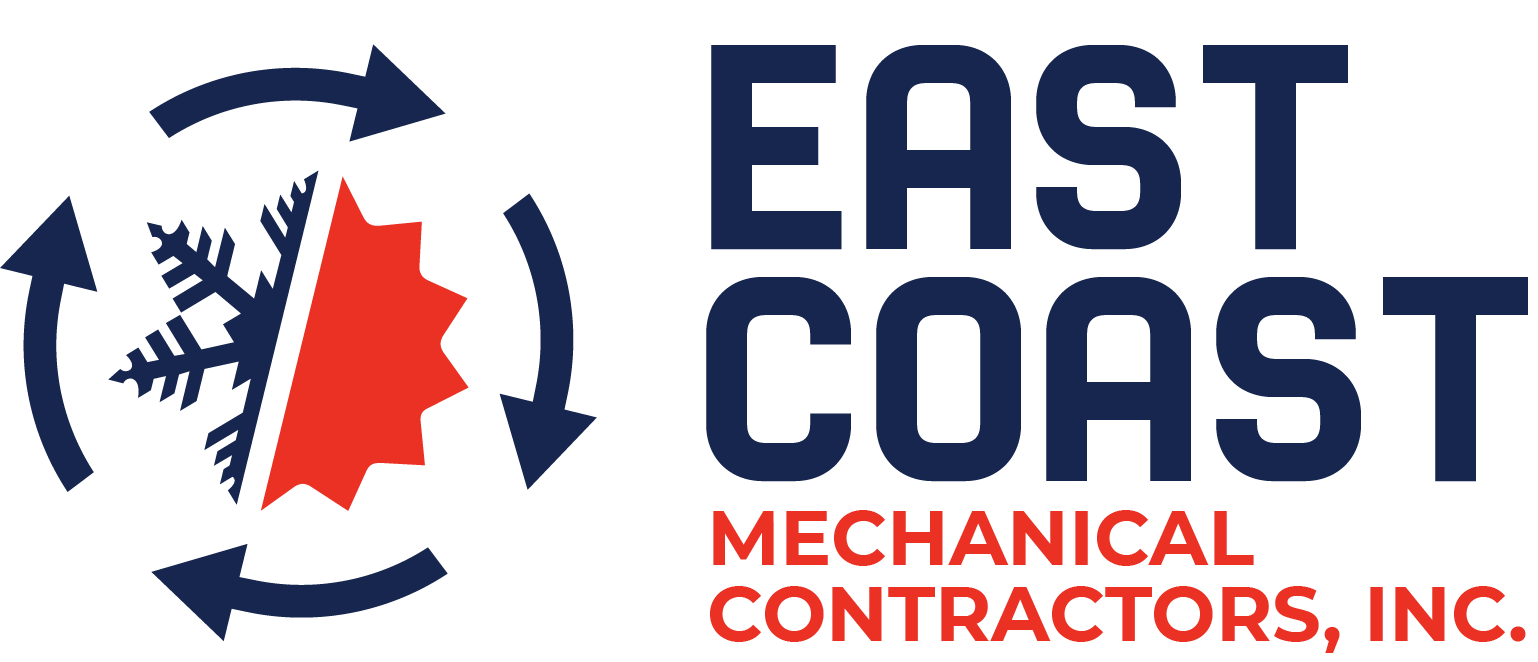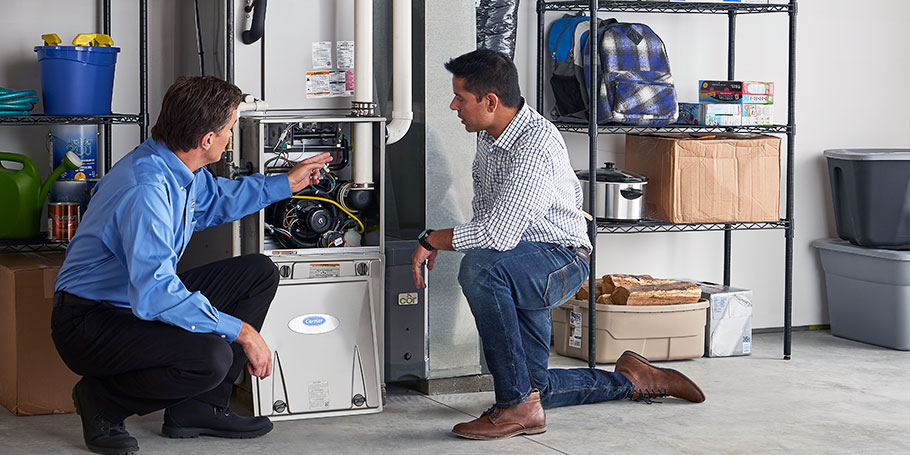East Coast offers affordable heating maintenance that will keep your home comfort system operating at peak efficiency and prolong its life expectancy. Ask about our Peak Performance Maintenance programs. Our programs are budget friendly and provide peace of mind that your unit will last for many years to come. Our seasonal furnace or boiler tune-ups are quick, easy and affordable and should be scheduled once a year. Our experts will clean and inspect your furnace or boiler in the late Summer or early Fall and air conditioner or heat pump in the Spring.
Furnace Maintenance
Like all equipment in your home, your furnace benefits from maintenance to make sure everything is clean and running properly — and to take care of any necessary adjustments or repairs. Doing this on a regular basis, even if nothing appears to be wrong with your furnace, helps ensure your home stays comfortable and can save you from unexpected repair bills and from major breakdowns.
Why Should I Maintain My Furnace?
The biggest reasons to keep your furnace maintained are to save money and be more comfortable. Regular maintenance keeps your system running as efficiently as possible, which helps save on every heating bill. Maintenance is also key to preventing breakdowns (and the expensive repair bills that come with them) and prolonging the lifespan of your heating equipment so you don’t have to replace it as often. By avoiding unexpected breakdowns and malfunctions, you’ll also reduce your risk of having to suffer through the cold until somebody can come to your home and fix your furnace.
When and How Often Should I Maintain My Furnace?
Unusually high heating bills, excessive furnace noise and the need for frequent repairs can all be signs that maintenance is overdue. To avoid these issues, it’s best to get in the habit of doing furnace maintenance at least once a year — even more frequently if anyone in your home has respiratory issues.
So, when is the best time to take care of your annual furnace maintenance? Our suggestion: shortly before you expect to need your furnace. The end of summer or early fall will usually give you enough time to make sure everything is working as it should and to fix anything that needs fixing, so your furnace is ready when the winter chill kicks in.
A furnace protection plan from East Coast Mechanical can not only handle your annual furnace maintenance but also take the guesswork out of scheduling. We’ll contact you when it’s time for your furnace’s check-up, meaning you’ll never have to worry about not having heat when you need it because maintenance slipped your mind.
DIY Furnace Maintenance Checklist
While some furnace maintenance and repairs must be done by a licensed professional, there are plenty of things you can check and take care of yourself. Always be sure to turn the power off at your breaker box or fuse before doing any work on your furnace. And while you’re at it, we recommend checking your carbon monoxide detectors, too. Although they’re not actually part of your furnace, they’re just as critical to your health and wellbeing. As the weather cools down and you close all your windows, you’ll want to be sure they’re working.
Clean or Replace the Filters and Vents
The filter on your furnace’s air intake keeps dust, dirt and other contaminants from getting into the air inside your home. We recommend starting each heating season with a fresh filter and be sure to replace or clean it every two or three months, depending on the type of filter. Always turn off your furnace before removing the filter — otherwise, you’re pumping unfiltered air into your home — and be careful not to spill or spread any dust or debris that’s accumulated on the old filter.
Inspect the Thermostat
As with all electrical components, the most significant thermostat maintenance should be done by a professional electrician. But there are a few things you can do yourself.
- Check and clean the wiring
Start by turning off the power to your furnace. Check all wiring connections to make sure nothing’s loose or rusty, and use compressed air to clear out any dust, debris or insects. - Test the thermostat
Check all fan speeds, valves and dampers, and use a temperature sensor to confirm your thermostat is reading the correct temperature. Make sure it comes on and off according to its settings. - Confirm settings
Now is also a good time to check your temperature set points and thermostat scheduling to make sure they align with your current needs.
If you run into any problems, or if your thermostat or other electrical components of your furnace need more in-depth attention, you should call an East Coast Mechanical professional.
Check the Ducts
Leaky ducts can make your furnace less efficient and even lead to mold growth if moisture gets in. Inspect your ducts to look for any holes or seams that aren’t crimped together properly and repair as necessary. If you spot any mold, you can usually clean it off by scrubbing with some light detergent — but be sure to wear protective gear, including safety glasses, gloves and a mask. Once you’ve scrubbed off the mold, a fungicide spray such as RMR-141 can disinfect the area for extra protection against mold regrowth.
Inspect the Blower
The blower (or fan) ensures the heat produced by your furnace makes it to every corner of your home, so you want to be sure it’s working properly. Before you do any work on the blower, shut off the power to your furnace. Make sure the fan blades aren’t dirty or broken and ensure the fan wheel spins freely. If not, clear out any dust or debris and use oil to lubricate it if necessary. If there are any belts or pulleys, inspect them too, and replace or re-tension them as required. If your blower doesn’t work after you turn the power back on even after you’ve cleaned and oiled it, you might need to have a professional come and replace the motor.
Inspect the Burners
It’s important to keep burners and associated parts clean because build-up of carbon and soot can impede furnace performance. With the power and gas off, start by vacuuming the area around the burners to clear out any debris. Then inspect each individual part:
Burners: Pay particular attention to the front where the flame comes out and around any channels that help spread the flame between burners. Use a brass wire brush to remove any build-up.
Burner manifold: Use a thin wire or paperclip to ensure the manifold is clear so fuel can be delivered to the burners.
Ignitor: The ignitor (identifiable by the two wires connected to it) is very fragile, so avoid touching it as much as possible. If it looks damaged or dirty, it’s best to replace it rather than trying to solve the issue yourself.
Flame sensor: The flame sensor is part of your furnace’s safety mechanism, but if it’s dirty, it may not be able to tell that the burners are lit and will mistakenly shut your furnace off to protect you from unburned gas. You can use a scouring pad to clean the metal rod but be careful not to break or scratch the ceramic housing.
When to Reach Out to a Heating Professional
Furnaces and heating systems can be complex systems that involve gas, flames and electronics. As a result, it can be dangerous to interfere with them if you don’t have the proper knowledge and training. Keeping most parts clean is something you can do yourself, and some parts can be easily replaced on your own. But for anything more involved, we recommend calling in a professional. Contact us today to learn about the benefits of our 22-point furnace and boiler inspections.
Contact us
If you have furnace maintenance for your office or home, join hands with a licensed and insured contractor at East Coast Mechanical. Email: ecmcecmc@aol.com Address: 5133 W Hurley Pond Rd Suite A, Wall Township, NJ 07727 Hours: Monday to Friday 8 AM to 5 PM and Closed Saturday and Sunday.
Phone: 800-300-ECMC or 732-751-8877

